
Semestr2 / 1 - Oracle / Student_1-8
.pdf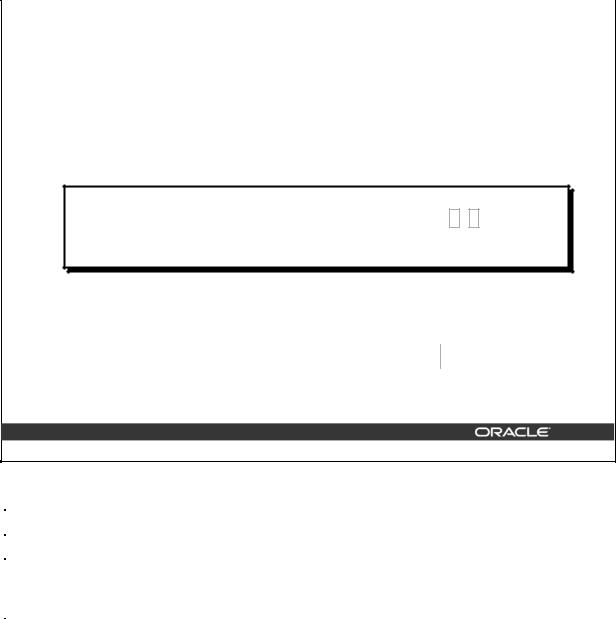
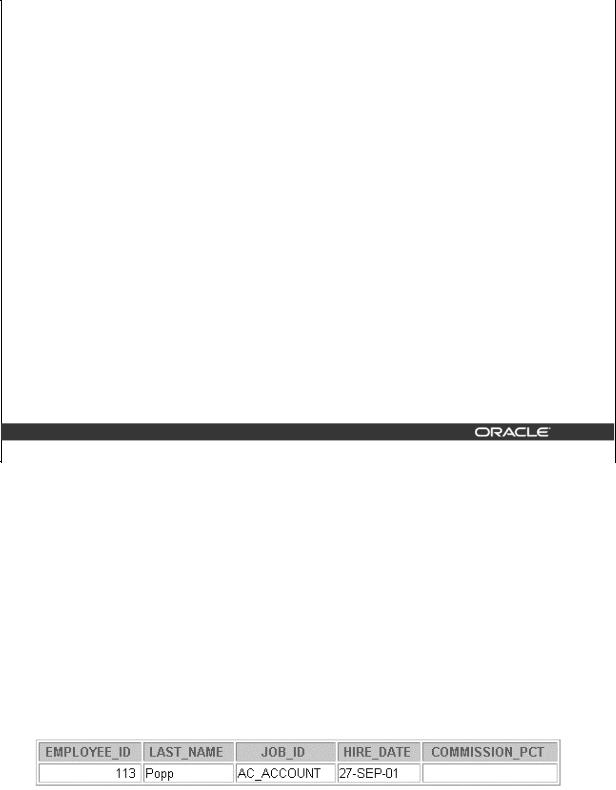
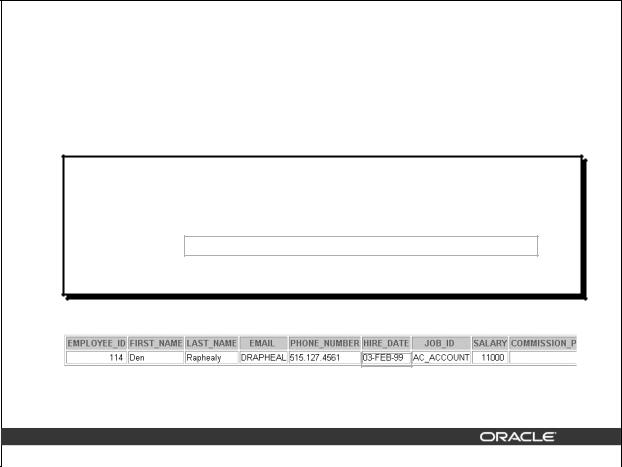
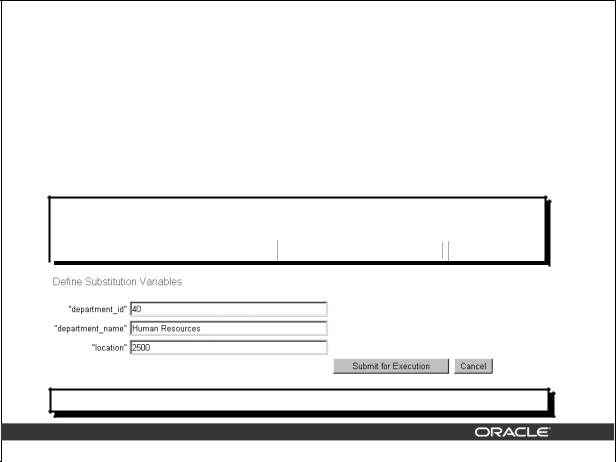

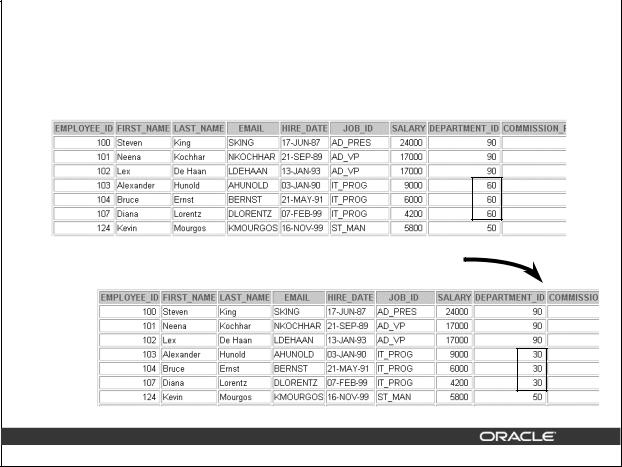


Updating Rows in a Table
•Specific row or rows are modified if you specify the WHERE clause.
UPDATE employees
SET |
department_id |
= 70 |
|
WHERE |
employee_id = |
113; |
|
|
|
|
|
1 row updated.
•All rows in the table are modified if you omit the WHERE clause.
UPDATE |
copy_emp |
SET |
department_id = 110; |
22 rows updated.
8-14 |
Copyright © Oracle Corporation, 2001. All rights reserved. |
Updating Rows (continued)
The UPDATE statement modifies specific rows if the WHERE clause is specified. The slide example transfers employee 113 (Popp) to department 70.
If you omit the WHERE clause, all the rows in the table are modified.
SELECT last_name, department_id
FROM copy_emp;
…
Note: The COPY_EMP table has the same data as the EMPLOYEES table.
Introduction to Oracle9i: SQL Basics 8-14


